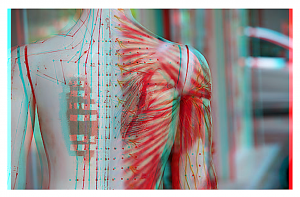Acupuncture Anatomy and Myofascial Lines
Research on connective tissues demonstrate a possible anatomical basis for the acupuncture meridians.
UNITED STATES, March 31, 2021 /EINPresswire.com/ -- There are many mysteries about acupuncture but research has shown it to be effective for a variety of disorders. While researchers have primarily focused on the nervous system for understanding acupuncture, the myofascial system provides many clues about acupunctures benefits. By mapping myofascial lines according to anatomical structures and functional muscle groups, it reveals much about the actions of acupuncture. Research by Dr. Helene Langevin has also found that acupuncture has the ability to stretch the fasciae, and this can account for how points in the hand can benefit distant regions of the body. The rest of this article will discuss how myofascial lines provide a basis for acupuncture anatomy, as well as how this relates to Master Tung's acupuncture points.
Research by Tom Myers has found that the fascia surrounding muscles form functional and structural units corresponding with anatomical planes. For instance, many of the muscles on the back of the body are interlinked through fasciae. Similarly, muscles on the anterior and lateral portions of the body are also interconnected through myofascial lines. On the posterior plane, the gastrocnemius muscle connects to the hamstrings, erector spinae, neck muscles and occipital fasciae. This posterior plane can be stretched as one unit in a simple forward bending position and is similar to the urinary bladder meridian. On the anterior plane, the SCM muscle connects to fasciae in the chest, abdomen, quadriceps and tibialias anterior muscles. This myofascial line is similar to the stomach meridian and can be stretched in backbends.
In Traditional Chinese Medicine (TCM) points on the stomach meridian and anterior portion of the leg are often used for lung and digestive conditions. While it is difficult to understand how points on the leg can treat the respiratory and digestive systems from a neurological perspective, the myofascial line theory provides a mechanical and anatomical basis for the actions of these points. Points like ST 36 and ST 40 therefore have a direct myofascial connection to respiratory muscles and fasciae in and around the chest. In a Taiwanese style of acupuncture known as Master Tung’s acupuncture, there are a group of three points on the thigh which are regarded as some of the most beneficial for lung disorders. These points are also located on the anterior fascial line, and have direct connections to the respiratory system.
On the posterior fascial line there are a group of acupuncture points in the achilles tendon that are used for treating neck and occipital disorders. Mapping the myofascial groups on this line reveals a direct connection from the achilles tendon to many of the small muscles in the neck. To help us understand how non-local points can effect distant regions of the body, we can draw from the principles of tensegrity. Tensegrity consists of two words, tension and integrity, and explains how tension moves through a system of compressed parts. When there is tension in the deep neck muscles, that tension can get transferred down the posterior line through the paraspinals, sacral fascia, hamstrings and calves. As the calve muscles converge to form the achilles tendons, needling into the achilles tendon can alleviate tension that has been distributed through the posterior line.
When we compare traditional acupuncture points with Master Tung’s points, and draw from the principles of tensegrity, we can discover a myofascial basis for acupuncture.
James Spears
Integrative Healing Society
email us here
Visit us on social media:
Facebook
Twitter
LinkedIn
Acupuncture Anatomy and Fasciae
Legal Disclaimer:
EIN Presswire provides this news content "as is" without warranty of any kind. We do not accept any responsibility or liability for the accuracy, content, images, videos, licenses, completeness, legality, or reliability of the information contained in this article. If you have any complaints or copyright issues related to this article, kindly contact the author above.

